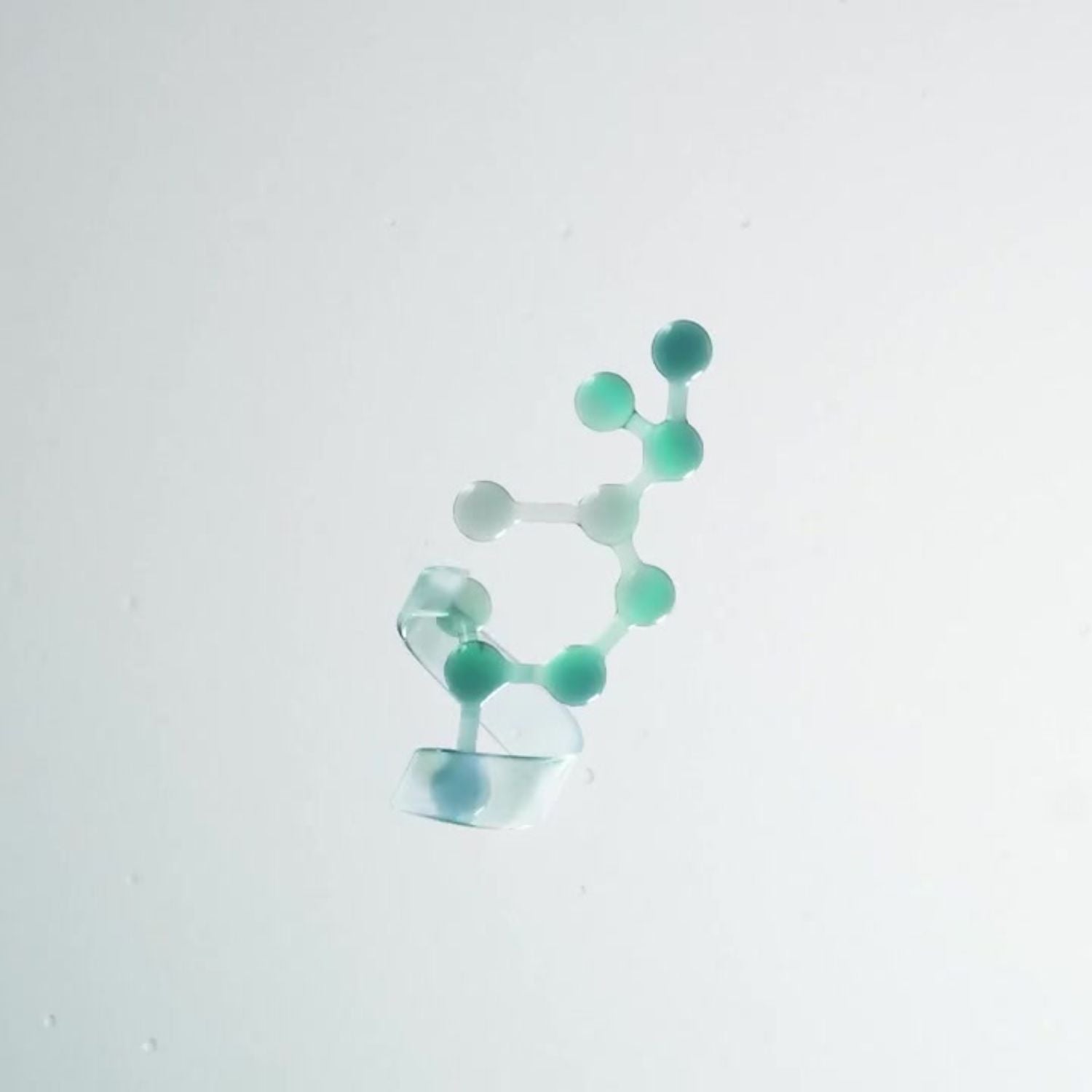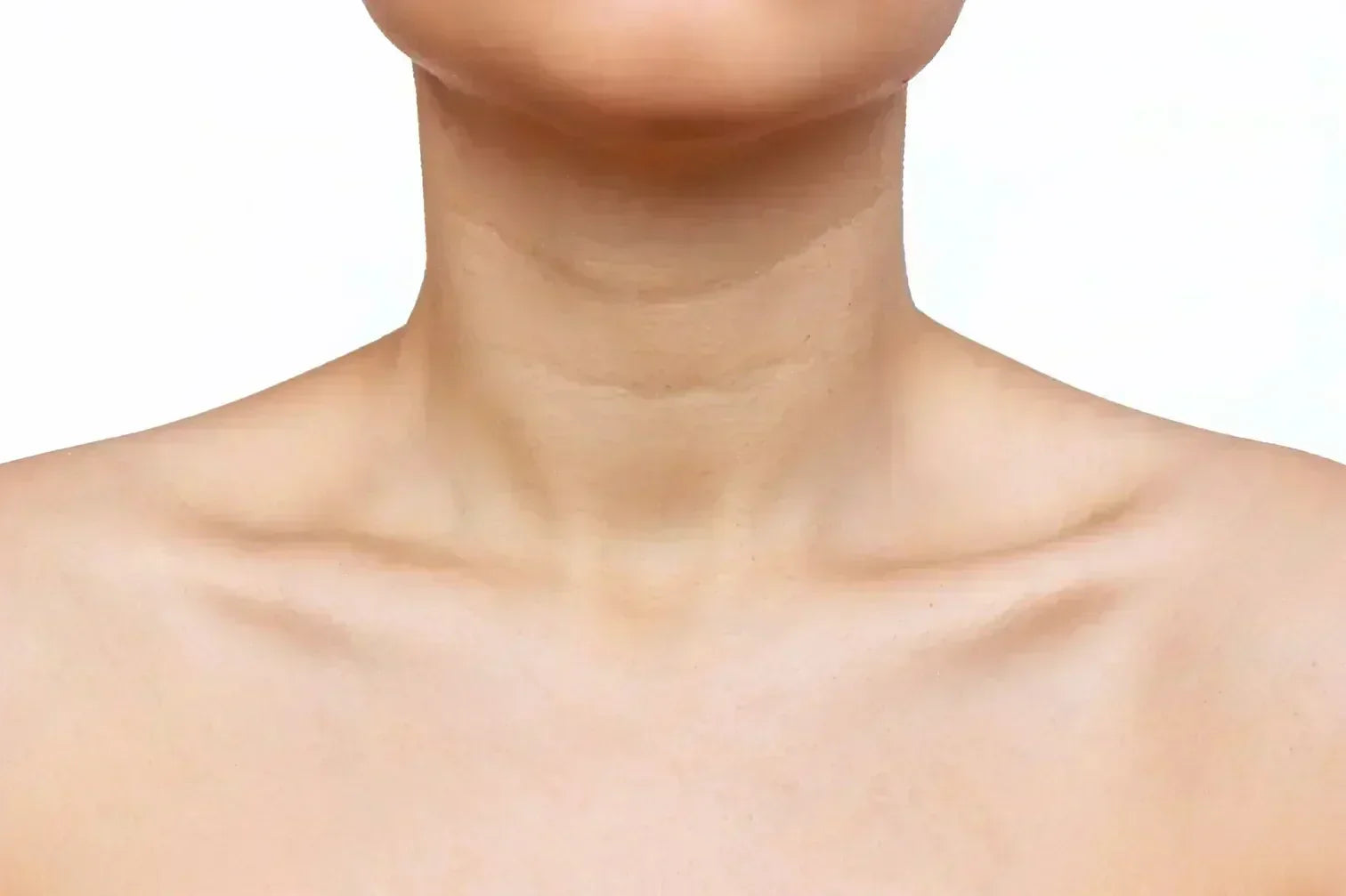Understanding Neck Wrinkles: Causes and Factors
The skin on the neck is unique in a few key ways. First, it contains fewer sebaceous glands and pores; this makes neck skin drier than most other areas of the body, which can lead to wrinkles, sagging, cracking, and uneven skin texture .1 The dermis of neck skin, the layer responsible for the skin's structural strength, is much thinner than the skin in the face. The skin on our neck also has higher levels of elastin and lower levels of collagen when compared to the rest of body's skin. This means the neck skin is highly elastic, allowing us to move our neck and head freely throughout life, but is more prone to the development of wrinkles due to less collagen. Plus, as we age, the skin across our bodies experiences a decline in both collagen and elastin. For the neck this depletion of already low levels of collagen can lead to even more wrinkling and weakening of the skin.
Collagen
Collagen creates a structural framework in the skin .2 Natural collagen production slows starting around your 20s or 30s and accelerates significantly for women during menopause. Without the structural support that collagen provides, skin loses its strength and thickness, resulting in crepey skin, saggy skin, and wrinkled skin. You may notice wrinkles on your body anywhere from lip wrinkles to wrinkled arm skin. Additionally, the skin on your neck contains less collagen in the first place, therefore skin aging manifests quicker in that area.
Elastin
Elastin gives the skin its ability to stretch and “bounce back” after movement. Age-related damage to cells causes elastin to decline over time, reducing the elasticity of the skin and leading to skin sagging . 3

Skin Health Habits for Neck Wrinkle Prevention
#2: Smoking
Smoking cigarettes or consuming other nicotine products can have detrimental impacts on the health of your skin. That’s because nicotine consumption narrows our body’s capillaries: the thin blood vessels that supply nutrients to skin. With less of these nutrients, the skin struggles to produce collagen. This can cause up to a 20% decrease in collagen synthesis among smokers, leading to the early development of or worsening of wrinkles in the skin, including on the neck . 5
Restorative Skin Health Habits
#1: Nourishing and Hydrating the Neck
Sebum a mixture of natural fats and oils that is produced by skin and protects us from damaging environmental factors like pollutants and pathogens. The neck skin has less sebaceous glands, and therefore produces less sebum compared to the rest of the body. With the additional decline of sebum with age, the skin on the neck area is at an innate disadvantage, making it more likely to experience a weakened skin barrier and less water retention.6 Typically women begin producing less sebum once menopause has started, and men tend to experience this loss much later in life. To combat these low levels of sebum, especially as you age, be sure to incorporate a daily peptide moisturizer for your neck area. You might consider including your neck into your daily face care routine!
Better yet, seek out ingredients that are scientifically proven to boost collagen and hyaluronic acid biosynthesis capabilities in skin, like the OS-01 peptide.* OS-01 can benefit all areas of the skin, but can be especially useful for the skin on the neck, which naturally has less collagen and water retention capabilities. OneSkin’s OS-01 BODY, our peptide body lotion, has also been shown to reduce UV-induced senescence and collagen degradation.*
#2: Exfoliation and Neck Skin Renewal
Exfoliation removes dead skin cells, priming your skin to resurface healthier cells. Exfoliation can be useful for the skin on the neck, as it can stimulate collagen and elastin production within the dermis. Additionally, the physical process of removing dead cells can encourage blood flow to the skin giving your cells more resources to create key proteins, including elastin and collagen .7 When it comes to exfoliation on the neck skin, moderation is key. Over-exfoliation can lead to redness, irritation, and a compromised skin barrier, especially for skin that naturally has a weaker skin barrier like the neck. Exfoliate no more than three to four times per week, or every other day.
#3: Specialized Neck Exercises and Massage
- Exercises: Focus on neck exercises that build muscle under the chin and along the side and back of the neck. These muscles act as a scaffold for neck skin to build healthy tissue as well as stimulate blood flow to the skin. A strong neck muscle will add volume below the surface thereby preventing sagging and wrinkle development. 8
- Massages: Massaging the face and neck with your hands or a tool like a gua sha smooths the skin, promotes blood flow, and stimulates collagen growth while also acting as a gentle exfoliator.9,10 Habitual massaging of the skin will help keep it healthy and wrinkle-free for longer.
#4: Home Remedies and Natural Treatments
- Aloe Vera, a tropical succulent plant, has been shown in clinical trials to reduce wrinkles when used both topically or ingested as a supplement.(11) Aloe Vera is abundant in nature across the globe and products containing aloe vera can be found in many pharmacies or beauty stores.
-
Natural or essential oils can be helpful at bolstering the oil barriers in skin, which can help prevent neck wrinkles.12 Make sure to use diluted essential oils in order to avoid irritation and consult your dermatologist about their recommendations.
-
Topical Vitamin C solutions can be helpful in reducing necklines by promoting healthy collagen production. We are unable to synthesize Vitamin C ourselves so we need to consume it in our diet. 13
Lifestyle Changes and Diet for Radiant Skin
Antioxidants for Repairing Healthy Collagen
Antioxidants neutralize free radicals within our body that would otherwise cause harm to your skin cells and break down collagen .14 A diet rich in antioxidants can prevent this form of damage from accumulating as you age, reducing the prevalence of wrinkles from horizontal necklines and stomach wrinkles to wrinkled hands and even wrinkled feet.
Protein for Collagen & Elastin Synthesis
Because constantly renewing itself, skin requires a consistent supply of proteins to rebuild collagen, elastin, and other structural proteins. Many of these proteins cannot be synthesized by the body and must be consumed in our diet. The amino acid building blocks of collagen, including proline, glycine, hydroxyproline, and Vitamin C and E, can be found in Fish, Meat, Dairy, fruit, and Legumes . 13,14,15
Healthy Fats for a Strong Lipid Barrier
Unlike saturated fats which tend to stay in the body and deposit themselves in blood vessels, unsaturated fats are used by the body's cells to ensure a healthy lipid balance .16 A diet high in Omega 3 fatty acids, polysaturated, and monounsaturated fats keep the skin barrier healthy by aiding in moisture retention and helping to prevent damage from environmental sources. Fish, vegetable oils, nuts, seeds, avocados, and dark chocolate are all great sources of these unsaturated fats.
Embracing Aging with Confidence
Embracing Aging with Confidence
- Neck skin is unique in that it naturally produces less sebum and contains less collagen, making it vulnerable to accelerated signs of skin aging
- Neck skin is often overlooked, but should be treated with the same level of care as the face, focusing on moisturization and combating the lower levels of collagen
- The OS-01 peptide is scientifically proven to reduce UV-induced collagen degradation and increase collagen biosynthesis
- OS-01 FACE is specifically formulated for the face, hands, and neck, and has been scientifically proven to improve skin’s barrier function



